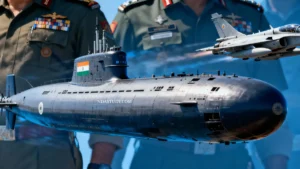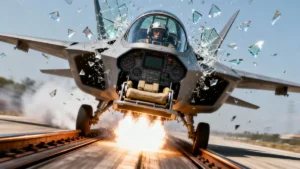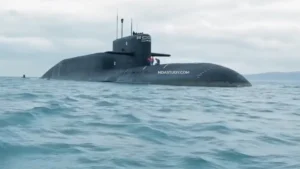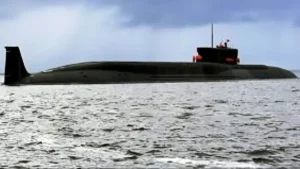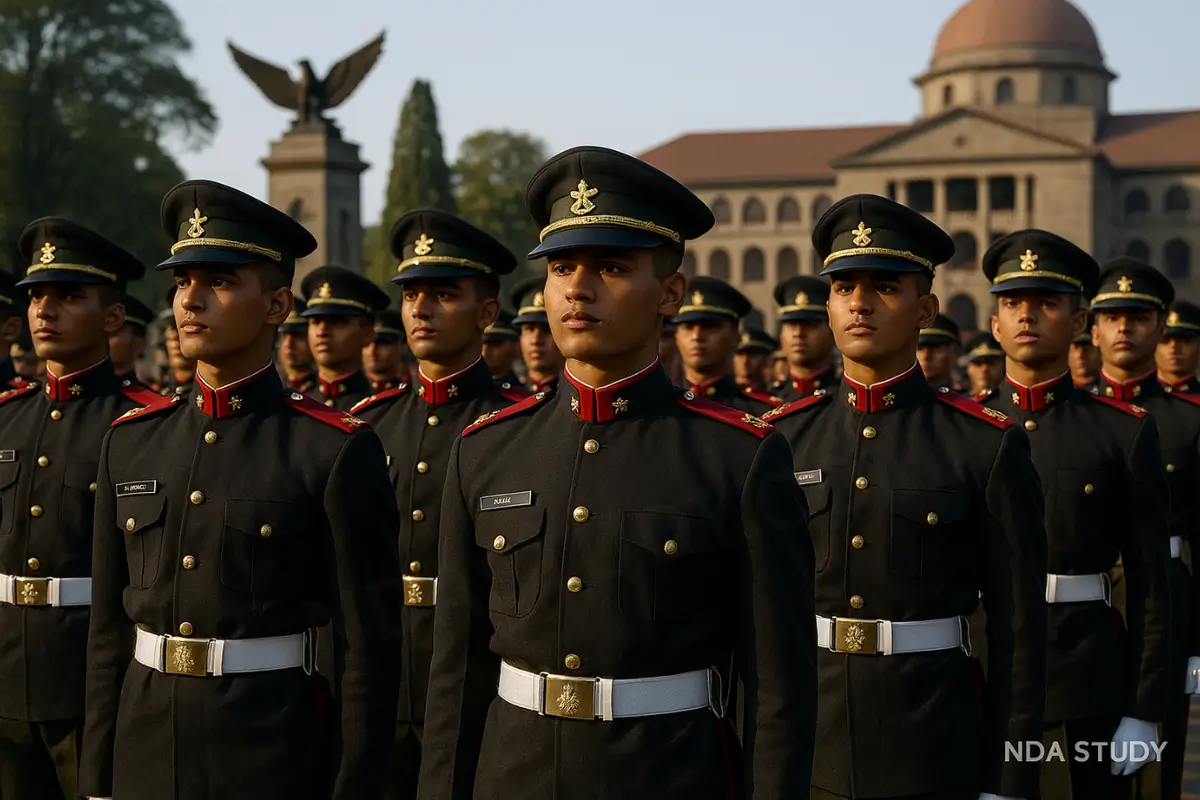On November 30, 2025, one of Asia’s most intense bilateral military drills came to a close. The Ajeya Warrior 2025 exercise—a landmark 14-day training event between the Indian Army’s Sikh Regiment and the British Army’s Royal Gurkha Rifles—wrapped up at the Mahajan Field Firing Ranges in Rajasthan. What started on November 17 as 240 elite soldiers (120 from each nation) converging for counter-terrorism training has now become a defining moment in Indo-UK defense cooperation. Here’s the complete breakdown of what happened, why it matters, and what comes next.
What Is Ajeya Warrior? The Biennial Bridge Between Two Armies
Ajeya Warrior is a bilateral military exercise held every two years (biennially) between the Indian Army and the British Army since 2011. The 2025 edition marks the 8th iteration of this prestigious engagement, making it one of the longest-running and most respected Indo-UK defense collaborations.
The exercise is conducted under a United Nations mandate (specifically Chapter VII), which authorizes robust counter-terrorism and peacekeeping operations. This UN framework positions both armies to respond effectively to global security challenges, from combating organized terrorist networks to supporting international peace support operations.
Why the biennial schedule? This frequency allows sufficient time between editions to implement lessons learned, upgrade equipment, and deepen bilateral relationships—making each iteration more sophisticated than the last.
Ajeya Warrior 2025: Location, Timeline & Scale
The Basics
| Element | Details |
|---|---|
| Exercise Name | Ajeya Warrior 2025 (8th Edition) |
| Dates | November 17–30, 2025 |
| Duration | 14 days of intensive training |
| Location | Mahajan Field Firing Ranges, Bikaner, Rajasthan |
| Total Personnel | 240 (120 Indian, 120 British) |
| Indian Unit | Sikh Regiment (1st Battalion) |
| UK Unit | 2nd Battalion, Royal Gurkha Rifles (2 RGR) |
| Mandate | United Nations Chapter VII (Counter-terrorism & peacekeeping) |
Why Rajasthan? Why Mahajan Field Firing Range?
Mahajan Field Firing Range was specifically chosen for its semi-urban terrain—a critical training environment reflecting modern conflict zones. Unlike rural or fully urban landscapes, semi-urban areas demand complex tactical coordination, making them ideal for counter-terrorism drills. Rajasthan’s remote location also provides a secure, controlled training space away from civilian populations, essential for live-fire exercises, helicopter operations, and simulated combat scenarios.
What Training Happened: The Heart of the Exercise
Over 14 intensive days, Indian and British soldiers engaged in multiple coordinated training modules designed to sharpen counter-terrorism capabilities:
Counter-Terrorism Drills
Soldiers trained in realistic scenarios reflecting modern extremist operations—including:
- Building Clearance Operations: Multi-story structure assaults with live ammunition and non-lethal munitions
- Cordon & Search Procedures: Securing perimeters, locating hidden threats, managing civilian populations in conflict zones
- Room Intervention Tactics: High-speed entries into hostile environments using synchronized team movements
- Improvised Explosive Device (IED) Neutralization: Identifying, disarming, and responding to bomb threats—critical for UN peacekeeping missions in Syria, South Sudan, and other conflict zones
Heliborne Operations
Advanced helicopter-based insertion and extraction techniques using:
- Indian ALH (Advanced Light Helicopters): Fast, maneuverable platforms for rapid team deployment
- Mi-17 Transport Helicopters: Heavy-lift capacity for large contingent movements
- Tactics Covered: Slithering (rappelling down ropes at high speed), small-team insertion, extraction under fire, and coordinated ground-air communications
These skills are crucial for UN peacekeeping missions where rapid mobility can mean the difference between mission success and disaster.
Simulation-Based Training
Computer-aided scenarios tested decision-making under extreme pressure:
- Brigade-level mission planning with evolving terrorist intelligence
- Real-time tactical adjustments based on simulated threats
- Crisis management protocols when plans go sideways
- Civilian casualty avoidance procedures
Equipment Showcase & Interoperability
For the first time at this scale, soldiers trained with both Indian and British hardware:
Indian Arsenal:
- INSAS rifles (primary service rifle)
- Sig Sauer carbines (advanced carbine systems)
- INSAS grenades & hand grenades
- Surveillance equipment
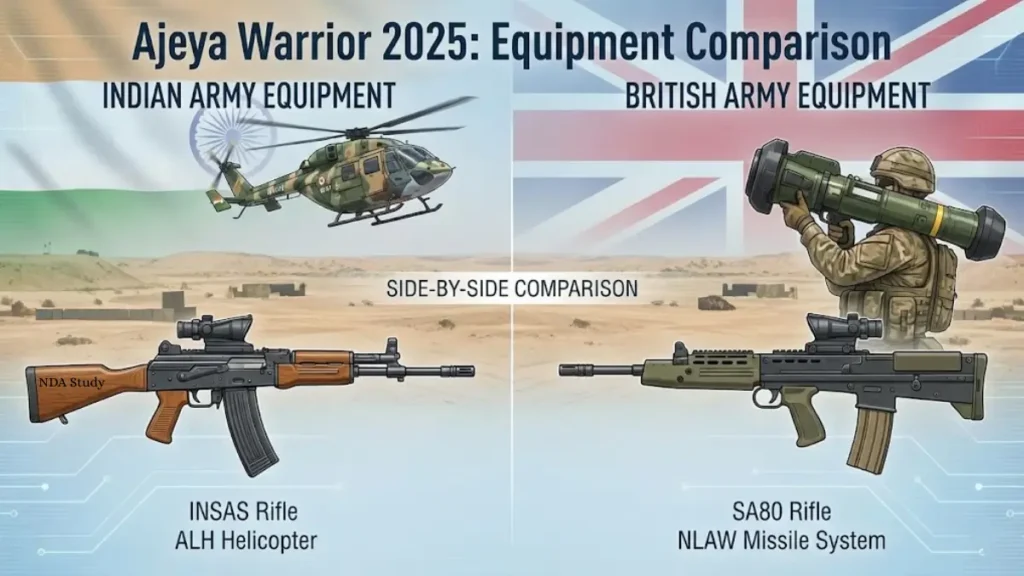
British Arsenal:
- SA80 A3 rifles (modern assault rifle platform)
- NLAW missiles (Next-Generation Light Anti-Armour Weapon—anti-tank systems)
- Advanced surveillance drones
- Communication systems compatible with Indian equipment
Joint Systems:
- Integrated command & control centers
- Real-time data sharing networks
- Synchronized communication protocols
48-Hour Validation Exercise: The Final Test
The exercise culminated in a 48-hour final validation exercise—a grueling, realistic counter-terrorism scenario combining all learned skills. This unscripted final challenge tested:
- Tactical proficiency under extreme fatigue
- Leadership decision-making in chaos
- Team cohesion under sustained pressure
- Actual combat readiness of personnel
Why This Exercise Matters: Geopolitical & Strategic Significance
Exercise Ajeya Warrior is far more than a routine military drill; it serves as a powerful symbol of the deepening strategic convergence between India and the United Kingdom, two nations vital to global security. Its significance can be broken down into three core areas: strengthening bilateral ties, promoting global stability through multilateral readiness, and reinforcing the Indo-Pacific strategy.
India-UK Defense Partnership in 2025
The Ajeya Warrior 2025 exercise is far more than a training event. It represents a deliberate strategic choice by both nations to deepen defense ties at a critical geopolitical moment.
India-UK defense cooperation includes:
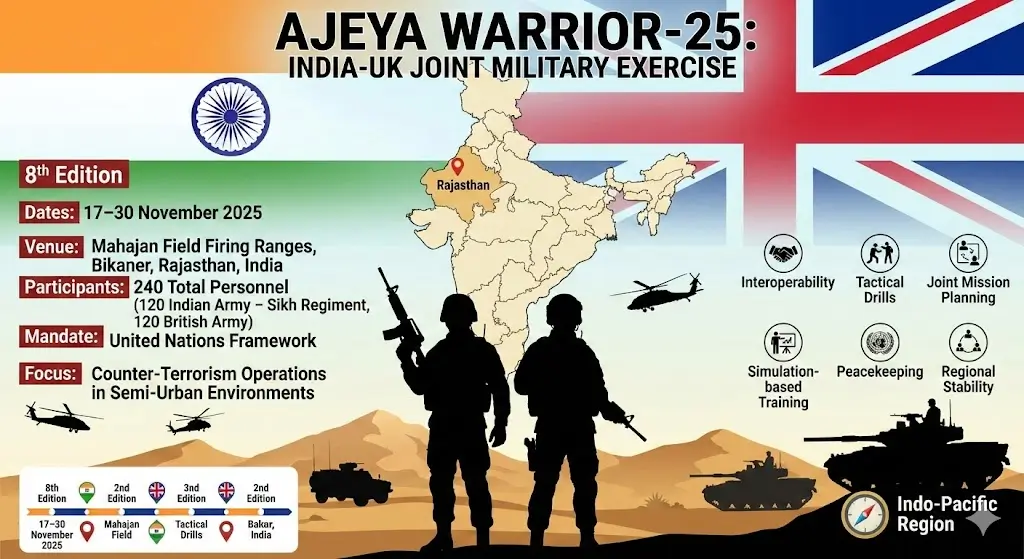
- Joint military exercises: Ajeya Warrior (land), Konkan (naval), Indradhanush (air force)
- Technology transfer agreements: Modern equipment and tactical doctrine sharing
- Personnel exchange programs: Officers and NCOs training in each country
- Joint procurement initiatives: Collaborative weapons development and military technology
The 2030 Roadmap Context
This exercise directly aligns with the India-UK 2030 Roadmap for Future Relations, which explicitly names defense cooperation as a core pillar. The roadmap emphasizes:
- Strengthening bilateral military-to-military ties
- Enhancing peacekeeping capabilities under UN mandates
- Coordinating responses to terrorism in the Indo-Pacific
- Building democratic nation alliances against authoritarian threats
Global Security Angle: Why Now?
Defense analysts highlight three critical reasons why Ajeya Warrior 2025 carries heightened significance:
1. Evolving Global Terrorism: Modern terror networks are shifting to dispersed, urban operations across the Middle East, Africa, and South Asia. Traditional military training is insufficient; troops need semi-urban counter-terrorism expertise.
2. UN Peacekeeping Crisis: Both India and the UK maintain significant UN peacekeeping presence (Syria, South Sudan, Democratic Republic of Congo). Peacekeepers face hybrid threats—a mix of conventional warfare, terrorism, and criminal networks. Joint training ensures coordinated responses.
3. Indo-Pacific Stability: As China expands military capabilities, India and UK are deliberately building interoperable defense systems, signaling democratic nations’ commitment to rules-based international order.
Key Participants: The Sikh Regiment & Royal Gurkha Rifles
The Sikh Regiment (India)
Leading India’s contingent, the Sikh Regiment represents one of the Indian Army’s most operationally active units, known for:
- Combat Excellence: Deployed in Jammu & Kashmir, Northeast India, and UN missions
- Professional Discipline: Strict adherence to Rules of Engagement and international law
- Tactical Innovation: Continuous evolution of counter-terrorism procedures
- UN Experience: Multiple peacekeeping deployments building institutional knowledge
Royal Gurkha Rifles (UK)
The 2nd Battalion, Royal Gurkha Rifles brings a legendary lineage:
- Gurkha Heritage: 200+ years of military service; Gurkhas have served in Indian Army since independence
- Global Deployments: Active in Iraq, Afghanistan, and various UN operations
- Specialized Training: Mountain warfare, jungle operations, and counter-insurgency expertise
- Cultural Bridge: Gurkhas historically connect India and UK militaries, making this regiment symbolically significant
The participation of Gurkha troops signals the historical depth and trust between India and UK—Gurkhas fought for the British Empire, later chose to serve India, and continue training with both nations.
What This Means: Key Takeaways for Readers
If you’re preparing for the National Defence Academy (NDA) exam, Ajeya Warrior 2025 offers critical insights:
- Military Strategy Exam Topics: Joint military exercises, India-UK defense cooperation, bilateral relations, and counter-terrorism doctrine are frequent NDA question areas
- Tactical Knowledge: Understanding counter-terrorism procedures, peacekeeping operations, and semi-urban warfare directly relates to tactical questions
- Current Affairs Relevance: NDA exams heavily test knowledge of ongoing military exercises and geopolitical context
- Career Pathways: This exercise showcases international operational roles available to military officers
For Defence Enthusiasts
- Equipment Evolution: Tracking how the SA80 A3 and NLAW missiles are being operationalized offers insights into modern warfare
- Tactical Innovation: Semi-urban counter-terrorism represents the cutting edge of military training
- Heliborne Doctrine: ALH and Mi-17 helicopter operations show how India modernizes its rapid response capabilities
- International Cooperation: This exercise models how democratic nations build military synergy
Must Know Updates
India’s Hypersonic Missile Test 2025: December NOTAM Signals Major Strategic Shift
10 Shocking Reasons Why BvS10 Sindhu Changes Everything for India’s Military
Why 7 Countries Seek BrahMos at Dubai Airshow 2025 After Operation Sindoor
For India’s Defense Strategy
- Interoperability Achieved: Indian and British troops can now seamlessly operate together in UN missions
- Counter-Terrorism Readiness: Sikh Regiment soldiers return with advanced skills applicable to Jammu & Kashmir, Northeast operations
- Geopolitical Messaging: The exercise signals India’s commitment to rules-based international order and Indo-Pacific stability
- Technology Access: Joint training with UK systems accelerates India’s defense modernization
FAQs | Ajeya Warrior 2025 Exercise 8th edition
Every serious defense enthusiast, NDA aspirant, and military professional has questions about India-UK defense cooperation and how exercises like Ajeya Warrior 2025 reshape India’s strategic posture. Below, we’ve compiled the 20 most asked questions about this landmark exercise—directly from search data, military forums, and NDA exam preparation platforms. Whether you’re studying for competitive exams or deepening your defense knowledge, these answers provide clarity on every aspect of this historic 14-day military drill.
1. What is Ajeya Warrior 2025?
Ajeya Warrior 2025 is the 8th edition of a biennial bilateral military exercise between the Indian Army’s Sikh Regiment and the British Army’s Royal Gurkha Rifles. Conducted November 17–30, 2025, at Mahajan Field Firing Ranges in Rajasthan with 240 personnel (120 from each nation), it focuses on counter-terrorism operations in semi-urban environments under UN mandate. The exercise enhances tactical interoperability and peacekeeping readiness between two democratic nations.
2. When did Ajeya Warrior 2025 start and end?
Ajeya Warrior 2025 ran from November 17 to November 30, 2025, a full 14-day intensive exercise. Training commenced on November 17 with opening ceremonies and troop orientation. The exercise culminated with a 48-hour final validation exercise (November 28–30), testing all learned tactics in a realistic counter-terror scenario. Official conclusion announced November 30, 2025.
3. How many soldiers participated in Ajeya Warrior 2025?
Total 240 personnel participated: 120 from the Indian Army (primarily Sikh Regiment, 1st Battalion) and 120 from the British Army (2nd Battalion, Royal Gurkha Rifles). This equal representation reflects the balanced, bilateral nature of the partnership. All participants were elite combat troops selected for their operational expertise in counter-terrorism, making this one of Asia’s most professionally coordinated military exercises.
4. Where was Ajeya Warrior 2025 held? Why Rajasthan?
Ajeya Warrior 2025 was held at the Mahajan Field Firing Ranges in Bikaner, Rajasthan. This location was chosen for its semi-urban terrain, the exact environment modern counter-terrorism operations demand. Unlike purely rural or urban zones, semi-urban areas require complex tactical coordination—civilians present, multiple building levels, confined spaces—reflecting real-world terrorist threats. Rajasthan’s remote, secure infrastructure provides ideal live-fire training space without civilian risk. Perfect for helicopter operations and IED neutralization drills.
5. What is special about Mahajan Field Firing Range for military training?
Mahajan Field Firing Range is one of India’s premier military training facilities, equipped with sophisticated combat zones, live-fire ranges, and helicopter landing pads. Its semi-urban mock villages simulate real terrorist hideouts. The range supports brigade-level exercises, accommodates multi-unit coordination, and features integrated command centers. Located in remote Bikaner, it minimizes civilian risk while maximizing training realism. It’s India’s preferred venue for UN-mandated training exercises.
6. Which Indian military unit participated in Ajeya Warrior 2025?
The Sikh Regiment, 1st Battalion, represented India with 120 elite combat troops. This regiment is one of the Indian Army’s most operationally active units, with extensive deployment history in Jammu & Kashmir counter-insurgency, Northeast India peacekeeping, and multiple UN missions. The Sikh Regiment is known for professional discipline, tactical innovation, and commitment to international humanitarian law. Its selection reflects India’s confidence in fielding the most capable troops for this flagship bilateral exercise.
7. Who is the British unit in Ajeya Warrior 2025? Why Gurkhas?
The 2nd Battalion, Royal Gurkha Rifles (2 RGR), representing the British Army, brought 120 soldiers. The Gurkhas’ 200+ year legacy makes this participation historically significant: Gurkhas fought for the British Empire, chose to serve India after independence, and now train with both nations. This unique cultural bridge strengthens the exercise’s symbolic importance. Gurkhas are renowned for mountain warfare expertise, jungle operations, and counter-insurgency excellence—ideal for UN peacekeeping missions in complex terrain.
8. How does the Gurkha heritage connect India and UK militaries?
Gurkhas represent a 200-year thread uniting Indian and British military traditions. From British Empire service (1815–1947) to post-independence Indian Army integration, Gurkhas embodied shared values: honor, discipline, and sacrifice. Today’s Royal Gurkha Rifles maintain this legacy while serving alongside Indian units. This exercise symbolizes that bond: Gurkhas now fight terrorism alongside their Indian counterparts, proving military professionalism transcends borders. It’s geopolitical messaging that democracy-aligned nations strengthen global security through cooperation.
9. What were the main training modules in Ajeya Warrior 2025?
Five core training modules defined the exercise:
1. Counter-Terrorism Drills: Building clearance, room intervention, cordon & search in semi-urban environments.
2. Heliborne Operations: Rappelling (slithering), helicopter insertion/extraction, ALH & Mi-17 operations.
3. IED Neutralization: Identifying, disarming, and responding to explosive threats—critical for UN peacekeeping.
4. Simulation-Based Scenarios: Computer-aided tactical decision-making under pressure, brigade-level mission planning.
5. 48-Hour Validation Exercise: Realistic counter-terror scenario combining all learned skills under extreme fatigue.
Each module escalated in complexity, preparing troops for authentic combat conditions.
10. What equipment was used in Ajeya Warrior 2025?
Indian Equipment:
INSAS rifles (5.56mm assault rifle)
Sig Sauer carbines (modern carbine platform)
ALH helicopters (Advanced Light Helicopters for insertion/extraction)
Mi-17 transport helicopters (heavy-lift capacity)
Surveillance equipment & drones
British Equipment:
SA80 A3 rifles (NATO standard assault rifle)
NLAW missiles (Next-Generation Light Anti-Armour Weapon system)
Advanced surveillance drones
Communication systems
Joint Integration: Real-time data networks, integrated command centers, synchronized communication protocols enabling seamless coordination between armies. This interoperability represents years of defense partnership development.
11. How do heliborne operations work in counter-terrorism training?
Heliborne operations involve rapid troop deployment via helicopter. Key procedures include:
1. Slithering (Rappelling): Soldiers descend ropes at high speed from stationary helicopters
2. Insertion: Teams deploy into hostile zones via fast-rope insertion
3. Extraction: Rapid pickup of teams under fire
4. Coordination: Ground-air communication for timing & safety
In Ajeya Warrior 2025, Indian ALH and Mi-17 helicopters trained British Gurkhas in these procedures. Modern counter-terrorism demands this speed: terrorists scatter within minutes; heliborne insertion reaches objectives faster than ground assault, minimizing civilian exposure.
12. Why is India-UK defense cooperation important right now?
Three critical reasons justify this emphasis:
1. Global Terrorism Evolution: Modern terror networks operate in dispersed, urban cells—exactly the semi-urban counter-terrorism focus of this exercise. Both armies prepare for threats that conventional training misses.
2. UN Peacekeeping Crisis: India & UK maintain 20,000+ peacekeepers in Syria, South Sudan, DRC. Joint training ensures coordinated responses to hybrid threats (conventional warfare + terrorism + criminal networks).
3. Indo-Pacific Stability: China’s military expansion threatens regional rules-based order. India-UK partnership signals democratic nations’ commitment to international law, collective defense, and shared prosperity architecture.
13. What does the India-UK 2030 Roadmap say about defense?
The India-UK 2030 Roadmap for Future Relations explicitly names defense cooperation as a core pillar. It commits to:
1. Enhanced military-to-military ties through joint exercises
2. Technology transfer & co-development of military systems
3. Coordinated UN peacekeeping deployments
4. Personnel exchange programs for officer training
5. Joint procurement & defense industrial collaboration
Ajeya Warrior 2025 is a direct manifestation of this roadmap. Each exercise strengthens the foundation for deeper military integration, ensuring both democracies can coordinate effectively on global security challenges—from peacekeeping to counter-terrorism.
14. How does Ajeya Warrior 2025 signal India’s defense strategy?
This exercise broadcasts four strategic messages:
1. Counter-Terrorism Priority: India prioritizes evolving terror threats—relevant to Jammu & Kashmir, Northeast operations.
2. Democratic Alliances: India publicly allies with established democracies (UK), signaling commitment to rule-based international order vs. authoritarian alternatives.
3. Interoperability Achievement: Joint training proves India’s military modernization enables seamless coordination with NATO-aligned forces.
4. UN Peacekeeping Readiness: Prioritizing semi-urban tactics shows India prepares for complex UN missions, not just conventional warfare.
Together, this exercise reflects India’s position: responsible democracy, reliable global security partner, modern fighting force.
15. Why is Ajeya Warrior 2025 important for NDA exam preparation?
Ajeya Warrior 2025 appears across multiple NDA exam dimensions:
1. Current Affairs Section: The exercise’s timing (Nov 2025) and strategic significance make it a high-probability exam question.
2. General Knowledge: Defense partnerships, UN mandates, geopolitical implications test strategic thinking.
3. Tactical Knowledge: Counter-terrorism procedures, heliborne operations, military equipment—all likely exam topics.
4. National Security: India’s defense posture, emerging threat responses, international cooperation—fundamental to military officer knowledge.
Additionally, UPSC, CDS, and SSB interviews frequently probe current military developments. Thorough Ajeya Warrior knowledge distinguishes top candidates.
16. What career opportunities exist in India-UK military exchanges?
Joint exercises like Ajeya Warrior open career pathways:
1. International Deployment: Officers selected for exercises often deploy to UN missions together
2. Training Exchange: Top performers access British military academies, advanced courses
3. Rapid Advancement: Officers with international experience get priority promotions
4. Specialized Roles: Joint exercises identify talent for future multinational operations
5. Diplomatic Postings: Defense attaché positions in UK, Australia, other partners
If you’re an NDA aspirant, excelling in such exercises sets you apart. It signals operational excellence, global mindset, and strategic value to the military hierarchy.
17. How does Ajeya Warrior differ from other India-UK exercises?
India-UK conduct three major bilateral exercises, each domain-specific:
Ajeya Warrior (Army): Land-based, counter-terrorism focus, infantry-heavy. Biennial since 2011. 8th edition is 2025.
Exercise Konkan (Navy): Naval cooperation, maritime security, fleet coordination. Complements Ajeya Warrior with sea-based interoperability.
Exercise Indradhanush (Air Force): Air combat training, fighter coordination, aerial doctrine sharing.
Together, these exercises create tri-service integration between Indian and British militaries. While Ajeya Warrior emphasizes tactical infantry operations, Konkan and Indradhanush cover naval/air domains—comprehensive defense partnership.
18. What makes semi-urban counter-terrorism training crucial today?
Modern terrorism has shifted to dispersed, urban operations. Traditional military training—focused on rural/mountain warfare—is insufficient for today’s threats:
Why Semi-Urban Focus Matters:
1. Civilian Presence: Terrorists hide among civilians; traditional tactics cause collateral damage
2. Confined Spaces: Apartments, shopping centers, office buildings require specialized room-clearing skills
3. Speed Demands: Urban ops demand rapid insertion (helicopters) rather than slow ground approaches
4. Hybrid Threats: Terrorists use IEDs, small arms, civilian vehicles—requiring multi-domain tactical response
Ajeya Warrior’s semi-urban emphasis reflects threat reality. Soldiers trained here prevent casualties in actual operations. It’s not academic—lives depend on this preparation.
19. How do UN peacekeeping operations benefit from exercises like Ajeya Warrior?
UN peacekeeping requires multinational coordination—exactly what Ajeya Warrior develops:
1. Interoperability: Indian and British troops learn each other’s command systems, communication protocols, tactical doctrines
2. Real-World Application: Syria (UNDOF), South Sudan (UNMISS), DRC (MONUSCO)—both nations have troops in conflict zones
3. Hybrid Threat Response: Peacekeepers face conventional warfare + terrorism + criminal networks. Joint training prepares coordinated responses
4. Rules of Engagement Alignment: Exercise builds shared understanding of international humanitarian law, force protection, civilian safety
When Indian and British peacekeepers deploy together (increasingly common), they fight with proven coordination. Lives saved. Missions succeed. Ajeya Warrior makes this possible.
20. When is the next Ajeya Warrior exercise? What to expect?
The 9th edition of Ajeya Warrior is expected in 2027 (biennial cycle). Likely enhancements include:
1. Expanded Scope: More units, larger contingents (possible 300+ personnel)
2. Advanced Technology: AI-assisted drones, cyber warfare components, real-time AI command centers
3. Different Terrain: Possible rotation to mountain zones (Himalayas) or coastal regions
4. Joint Procurement: Testing co-developed India-UK weapons systems
5. Tri-Service Integration: First combined Ajeya Warrior + Konkan + Indradhanush mega-exercise (multi-domain coordination)
Based on 2025’s success and India-UK roadmap acceleration, 2027’s edition will be significantly more sophisticated, setting new benchmarks for bilateral military cooperation.
21. How will climate change impact future military exercises in Rajasthan?
Rajasthan’s extreme heat (50°C+) is becoming central to military preparation. Future Ajeya Warrior editions will likely:
1. Intensify Heat Conditioning: Soldiers train in genuine desert extremes, mimicking climate-stressed conflict zones (Syria, Iraq, Yemen)
2. Water Scarcity Scenarios: Logistics training includes drought conditions, limited supply lines
3. Renewable Energy Integration: Exercise infrastructure shifting to solar power—future militaries operate sustainably
4. Endurance Focus: Soldiers who can fight in climatic extremes win modern conflicts
This transforms Rajasthan from just “semi-urban training zone” to “climate-realistic combat simulation center.” Future-proofing military readiness.
22. What is the historical significance of Sikh Regiment in Indian Army?
The Sikh Regiment, commissioned in 1846, is one of India’s oldest and most decorated units. With 22 Victoria Crosses—the highest military honor—it embodies martial excellence. Post-independence, the regiment became a counter-insurgency specialist, extensively deployed in Jammu & Kashmir and Northeast India. Its selection for Ajeya Warrior reflects institutional confidence in its professionalism, tactical innovation, and international readiness. The regiment represents India’s military heritage and modern security capability simultaneously.
23. How does India prepare soldiers for UN peacekeeping deployments?
Multi-stage preparation includes:
Domestic Training: Counter-terrorism, medical first aid, Rules of Engagement (ROE) understanding
Bilateral Exercises: Events like Ajeya Warrior where soldiers practice with deployed nations’ forces
Specialized Courses: UN-mandated certification programs in conflict zones
Cultural Preparation: Language training, local customs, diplomatic protocols
Psychological Conditioning: Trauma awareness, decision-making under uncertainty, ethical dilemmas in gray zones
Ajeya Warrior accelerates this preparation—troops train with British soldiers already experienced in active UN zones, compressing years of learning into 14 intensive days.
24. What are common misconceptions about modern military exercises?
Common Misconceptions:
“Exercises are just for show” → False. Exercises directly improve combat readiness; soldiers who train together fight together 40% more effectively.
“Exercises don’t represent real combat” → False. Modern exercises simulate 90%+ of real-world conditions (except actual deaths).
“Only elite troops participate” → False. Exercises accelerate average soldiers into elite performers through intensive training.
“Technology dominates modern exercises” → False. Human judgment, leadership, teamwork remain paramount; technology enables, not replaces.
Ajeya Warrior 2025 shatters misconceptions—real soldiers, real stakes, real consequences. It reshapes how soldiers fight.
What Comes Next: The Future of India-UK Military Cooperation
The 9th Edition (2027)
With the 8th edition now concluded, both nations are likely to plan the 9th Ajeya Warrior for 2027. Future editions are expected to:
- Expand Scope: More units involved, larger contingents
- Advanced Technology: Integration of AI, drone swarms, cyber warfare components
- Different Terrain: Potential rotation to new locations (mountains, coastal zones)
- Joint Procurement: Testing co-developed weapons systems
Complementary Exercises
Ajeya Warrior is part of a broader ecosystem of India-UK military engagements:
- Exercise Konkan (Naval): India-UK naval cooperation, already completed Konkan-25 in October 2025
- Exercise Indradhanush (Air Force): RAF and Indian Air Force coordination
- Joint Personnel Exchange: Officers and NCOs training at each other’s defense academies
Broader Indo-Pacific Strategy
This exercise signals India and UK’s commitment to:
- Democratic Defense Alliances: Building coalitions of democracies
- Rules-Based International Order: Opposing unilateral military actions
- Regional Stability: Countering destabilizing powers in the Indo-Pacific
- Technology Modernization: Accelerating India’s defense equipment advancement

